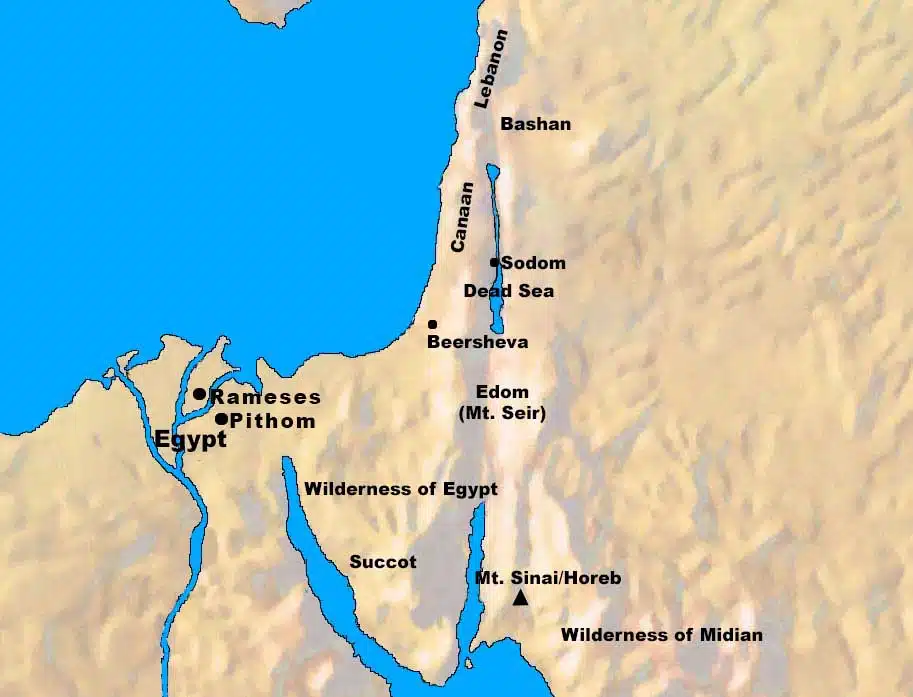The LORD gives instructions on how to build the tabernacle itself. The first item discussed was the making of the curtains that formed the walls and ceilings of the structure.
Having described how to make the most important items to be used for service within the tabernacle, the LORD now turned to tell Moses how to make the tabernacle itself. The first part of the instructions involved how to make the tabernacle with ten curtains. The word translated curtains is used elsewhere to describe panels that make up a tent dwelling (Jeremiah 49:29). The ten curtains would make up panels for a large tent, the tabernacle. The tabernacle was designed to be portable and suitable for its intended application while Israel was in the wilderness. It was also used for the same application once Israel reached the Promised Land, and was pitched in a permanent location at Shiloh (Joshua 18:1).
These curtains were to be made with the following specifications:
They were to be made with fine twisted linen and blue and purple and scarlet material, probably dyed wool(v. 1). These materials came from the “contribution” that was to be collected by Moses for the tabernacle’s construction in Exodus 25:4.
The curtains were to be made with cherubim and must be the work of a skillful workman. The curtains would have been woven, and the cherubim likely would have been designs woven into the fabric. These works of art were to be made by Spirit-enabled master craftsmen (Exodus 36:8).
The length of each curtain shall be twenty-eight cubits, and the width of each curtain four cubits. This would make each curtain around 42 feet long (or about 13 meters) and 6 feet wide (or slightly less than 2 meters). Plus, all the curtains shall have the same measurements. Thus these tent panels would serve the specified dimensions for the tabernacle.
Also, five curtains shall be joined to one another, and the other five curtains shall be joined to one another. That is, they should be joined together with clasps to make two sets of five curtains each. Each set of five curtains, when joined together, formed a single piece that measured 42 feet by 30 feet (5 panels, each 6 feet wide, making a 30 foot width).
To join the curtains, they were to make loops of blue on the edge of the outermost curtain in the first set. The other set of curtains were made likewise. They also had loops of blue on the edge of the curtain that is outermost in the second set of curtains. The craftsmen were to make fifty loops in the one curtain, and fifty loops on the edge of the curtain that is in the second set.
Further, the loops shall be opposite each other so they could be readily joined together with clasps of gold. To fasten the curtains together, they were instructed to make fifty clasps of gold, and with them they were to join the curtains to one another with the clasps so that the tabernacle will be a unit (v. 6).
Thus the curtains or panels were joined together but remained portable, so the tent could be taken down and relocated. These curtains must have been beautiful to behold. With cherubim sewn on, or woven into twisted linen and blue, scarlet, and purple wool, they must have been stunning to see. They were probably intended to represent the magnificent, royal presence of the LORD in His throne room surrounded by His cherubim.
It is unlikely these curtains were visible to the outside because of the coverings described in the next section. It is likely the goats’ hair and other layers formed a protective exterior, and the curtains formed an inner decorative tent layer.
Biblical Text:
1“Moreover you shall make the tabernacle with ten curtains of fine twisted linen and blue and purple and scarlet material; you shall make them with cherubim, the work of a skillful workman. 2 The length of each curtain shall be twenty-eight cubits, and the width of each curtain four cubits; all the curtains shall have the same measurements. 3 Five curtains shall be joined to one another, and the other five curtains shall be joined to one another. 4 You shall make loops of blue on the edge of the outermost curtain in the first set, and likewise you shall make them on the edge of the curtain that is outermost in the second set. 5 You shall make fifty loops in the one curtain, and you shall make fifty loops on the edge of the curtain that is in the second set; the loops shall be opposite each other. 6 You shall make fifty clasps of gold, and join the curtains to one another with the clasps so that the tabernacle will be a unit.
Check out our other commentaries:
-
Exodus 1:15-22 meaning
The second plan was even more severe – the midwives were to kill all the male Hebrew sons when they are born. But this plan...... -
1 Thessalonians 5:8-11 meaning
We can anticipate Jesus’s return with hope and love. We should encourage one another to live faithfully now so that we are ready for His...... -
Exodus 4:10-12 meaning
Moses’ fourth objection centers around his feeling of inadequacy for the job God wants him to do. ...... -
Deuteronomy 10:12-15 meaning
After recounting the story of the molten calf incident, Moses reminds the Israelites of God’s love for them, and strongly commands the Israelites not to...... -
Ecclesiastes 8:1-4 meaning
Since God is our ultimate authority, the wise man learns how to serve and submit to the authorities over him.......



